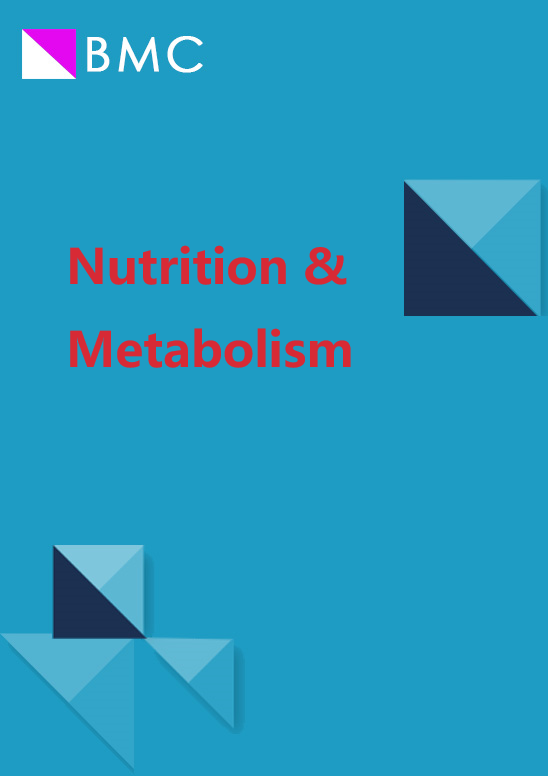超加工食品摄入量增加与心血管疾病发病风险增加有关:德黑兰血脂和血糖研究
IF 3.9
2区 医学
Q2 NUTRITION & DIETETICS
引用次数: 0
摘要
心血管疾病(CVD)是全球死亡的主要原因之一,但目前有关食用超标加工食品(UPF)对其发病率的影响的数据十分有限。鉴于伊朗的超高加工食品消费量增加,我们旨在调查超高加工食品摄入量与心血管疾病风险之间的关系。我们从德黑兰血脂和血糖研究(TLGS)中招募了年龄≥30 岁的无心血管疾病者(n = 2050)。通过有效的食物频率问卷(FFQ)收集膳食数据,并根据诺瓦食物分类法评估UPF摄入量。采用调整了潜在混杂因素的多变量考克斯比例危险模型来估算不同UPF摄入量分级的心血管疾病风险的危险比(HR)和95%置信区间(95% CI)。中位随访期为10.6年,心血管疾病发病率为10.1%,UPF摄入量每增加50克/天,心血管疾病风险增加22%。在控制了潜在的混杂因素后,UPF摄入量最高的参与者的心血管疾病发病率比摄入量最低的参与者高68%(HR=1.68,95% CI=1.14-2.48)。关于UPF的亚组,与参考值相比,处于第3个三分位数的参与者患心血管疾病的风险显著增加(HR=1.56,95% CI=1.04-2.34)。然而,面包、快餐、甜饮料、甜食和甜点、高脂乳制品和其他UPF的摄入与心血管疾病风险的增加无关。我们的研究结果支持这样一个假设,即在具有代表性的伊朗人口样本中,摄入较多的 UPF 会增加心血管疾病的发病率。本文章由计算机程序翻译,如有差异,请以英文原文为准。
Higher ultra-processed food intake is associated with an increased incidence risk of cardiovascular disease: the Tehran lipid and glucose study
Cardiovascular disease (CVD) is a major cause of death worldwide, although limited data are currently available regarding the impact of consuming ultra-processed food (UPF) on its incidence. Given the increased consumption of UPF in Iran, we aimed to investigate the association between UPF intake and CVD risk. Individuals without CVD (n = 2050) aged ≥ 30 years old were recruited from the Tehran Lipid and Glucose Study (TLGS). Dietary data were collected using a validated food frequency questionnaire (FFQ) and UPF intakes were assessed based on the Nova food classification. Multivariable Cox proportional hazard models adjusted for potential confounders were used to estimate the hazard ratio (HR) and 95% confidence intervals (95% CI) for the risk of CVD across tertiles of UPF intake. A 10.1% incidence of CVD occurred over a median follow-up of 10.6 years, with a 22% increase in CVD risk per each 50 g/day UPF intake. Participants with the highest intake of UPF had a 68% greater incidence of CVD compared to those with the lowest intake (HR = 1.68, 95% CI=1.14–2.48) after controlling for potential confounders. Regarding sub-groups of UPF, participants in the 3rd tertile compared to the reference had a significantly increased risk of CVD (HR = 1.56, 95% CI=1.04–2.34). Nevertheless, intake of bread, fast food, sweetened beverages, sweets and desserts, high-fat dairy products, and other UPFs were not associated with greater CVD risk. Our findings support the hypothesis that the incidence of CVD is enhanced with the higher consumption of UPF in a representative sample of the Iranian population.
求助全文
通过发布文献求助,成功后即可免费获取论文全文。
去求助
来源期刊

Nutrition & Metabolism
医学-营养学
CiteScore
8.40
自引率
0.00%
发文量
78
审稿时长
4-8 weeks
期刊介绍:
Nutrition & Metabolism publishes studies with a clear focus on nutrition and metabolism with applications ranging from nutrition needs, exercise physiology, clinical and population studies, as well as the underlying mechanisms in these aspects.
The areas of interest for Nutrition & Metabolism encompass studies in molecular nutrition in the context of obesity, diabetes, lipedemias, metabolic syndrome and exercise physiology. Manuscripts related to molecular, cellular and human metabolism, nutrient sensing and nutrient–gene interactions are also in interest, as are submissions that have employed new and innovative strategies like metabolomics/lipidomics or other omic-based biomarkers to predict nutritional status and metabolic diseases.
Key areas we wish to encourage submissions from include:
-how diet and specific nutrients interact with genes, proteins or metabolites to influence metabolic phenotypes and disease outcomes;
-the role of epigenetic factors and the microbiome in the pathogenesis of metabolic diseases and their influence on metabolic responses to diet and food components;
-how diet and other environmental factors affect epigenetics and microbiota; the extent to which genetic and nongenetic factors modify personal metabolic responses to diet and food compositions and the mechanisms involved;
-how specific biologic networks and nutrient sensing mechanisms attribute to metabolic variability.
 求助内容:
求助内容: 应助结果提醒方式:
应助结果提醒方式:


